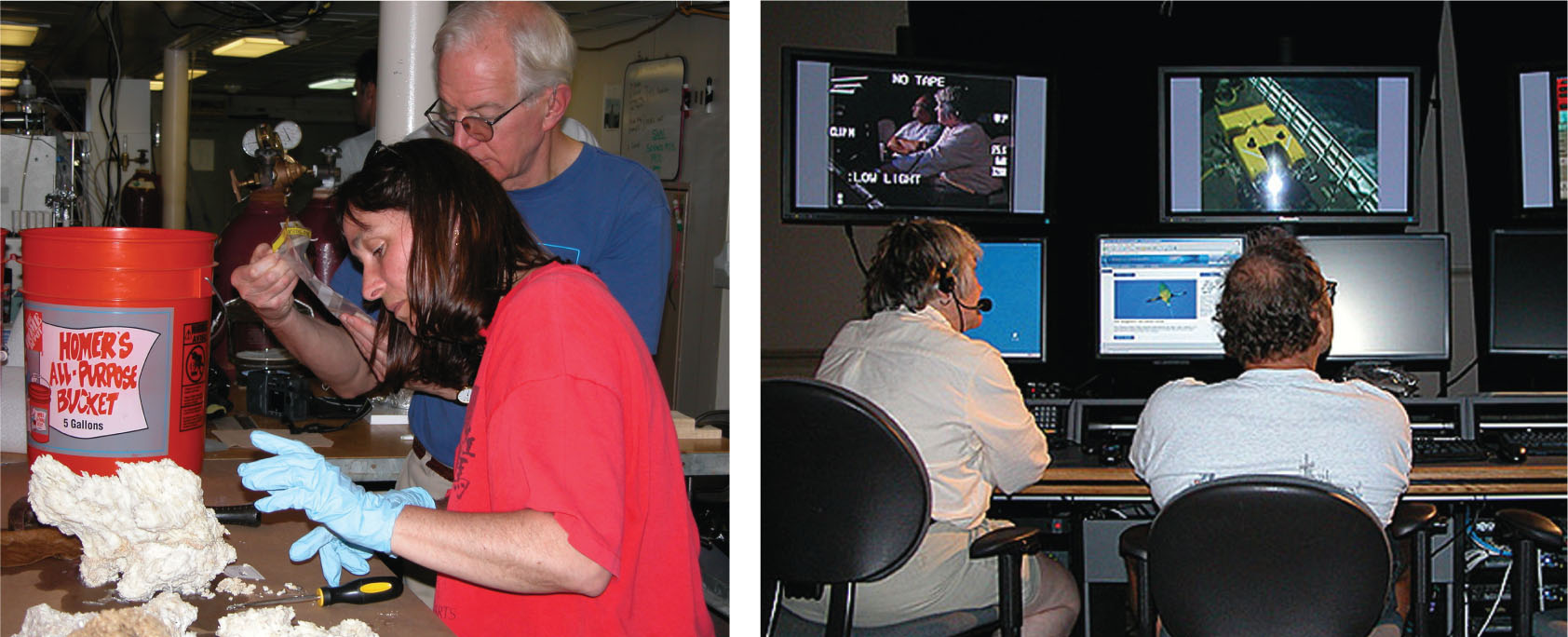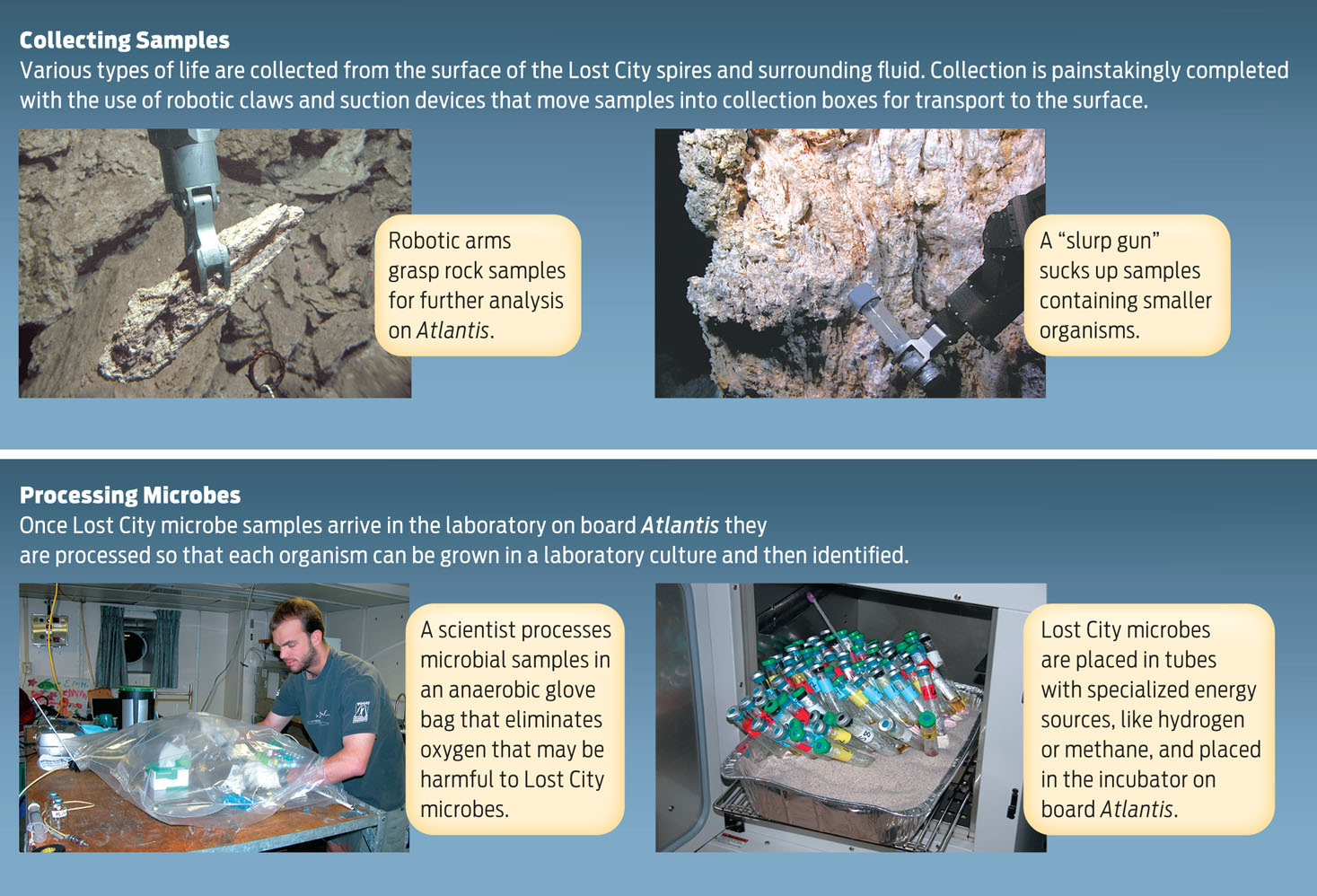Exploring the Deep
Since Lost City was discovered in 2000, researchers have organized three exploratory trips to the site. During each of these month-long expeditions, a team of more than 50 people—scientists, pilots, engineers, and ship crew—works around the clock to orchestrate dives and obtain specimens for research. A squad of sophisticated robotic assistants aids the effort.
It was an uncharted world no one had known existed. Kelley named the undersea world “Lost City.”
394
 All the time you’re looking at something that nobody’s ever looked at before, and that’s really cool.
All the time you’re looking at something that nobody’s ever looked at before, and that’s really cool.
— BILL BRAZELTON
Researchers dive to the site in Alvin, a tiny three-person submersible craft. Each trip to the murky depths takes about 30 minutes and is a risky descent into dark, uncharted waters. This isn’t flat seafloor, after all; the Lost City towers are like tall buildings, some as high as 18 stories. Members of the team compare the journey to flying through New York City in a helicopter at night with no lights. It’s well worth the effort, though: “All the time you’re looking at something that nobody’s ever looked at before, and that’s really cool,” says Brazelton.
To collect rock samples, researchers use a pair of remotely operated mechanical vehicles, Jason and Hercules, each equipped with robotic arms. The arms enable researchers to reach out and grab rocks. But that’s easier said than done: it’s a bit like attempting to grab a toy with a shaky mechanical claw at the arcade, only under water with strong ocean currents whipping the claw around. The chalky limestone prizes can also be quite brittle, crumbling if squeezed too tightly. Often the researchers grab something only to have it fall down between the spires.
395

To collect living specimens, the researchers use what they call a “slurp gun.” A robotic arm aims the gun, which then gulps a sample from the spires. Everything is caught on camera by Hercules. Eight hours later, the vehicles return to Atlantis with their cargo of samples.
Because many of the Lost City microbes cannot tolerate oxygen, the biologists have to be careful not to expose them to air. Using a special airtight bag with built-in gloves, the researchers transfer samples of microbes into test tubes without introducing oxygen into their environment. The microbes are then put in warm incubators and coaxed to grow (INFOGRAPHIC 18.2) .
